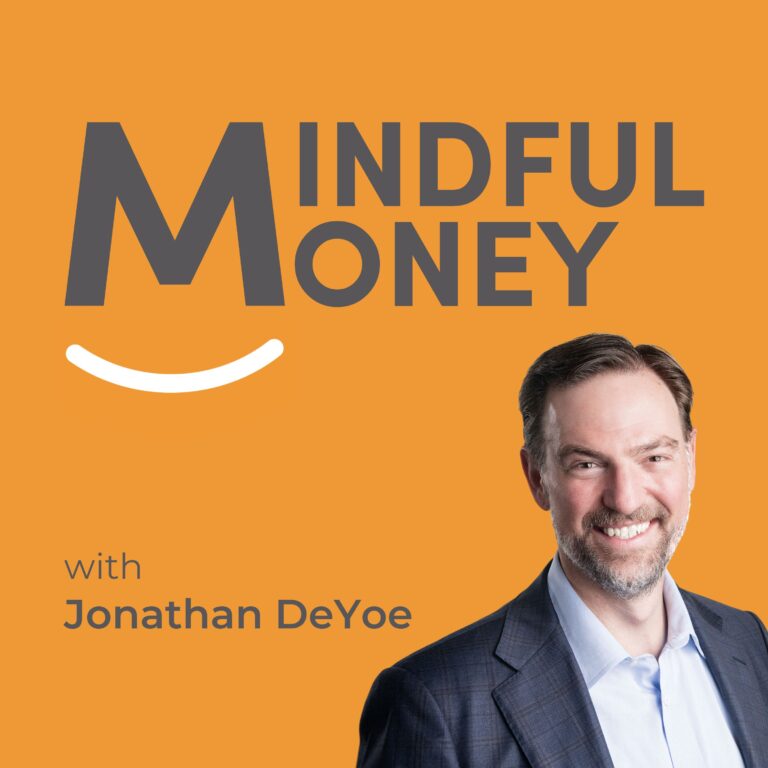This blog is the sixth of a 10-part series which covers everything you need to know to get started on your path to financial freedom:
1. The First Step in Any Financial Plan is NOT What You Think. We Start by Knowing What is Worth Seeking.
2. Developing Your Vision of a Perfect Life
3. Adopt a Savings Habit
4. Emergency Fund Basics
5. Eliminate High-Interest Debt
6. Saving and Investing for Retirement
7. Paying Down Low-Interest Debt and Building Taxable Savings
8. Simple, Basic, Mindful Investing
9. The Final Step – Portfolio Optimizers
10. The 10 Core Beliefs of Mindful Investors
Even if you love working, financial independence – the ability to live comfortably on your own terms (working or not) – is probably your ultimate financial goal.
This used to be called “retirement” and it was defined as that point in life where you transitioned from working (while saving a portion of your income) to not-working (while augmenting your fixed-income sources –
Social Security, Pension, Rents, Royalties, etc. –
with your savings). We all end up filling the GAP between our fixed-income sources and total spending by withdrawing from our savings.
Today, there are as many definitions of retirement as there are people retiring. There are many variables every retiree chooses between, including:
- Age of retirement: The FIRE movement would suggest earlier is better, but if work is more than just a financial transaction for you, this is less true.
- Working or not in retirement: About one third of our clients find some form of compensated work to do in retirement.
- Living Arrangements: Will you stay where you are, downsize, move across the country, look into retirement communities (or consider each of these in stages)?
- Lifestyle & Hobbies: It is not enough to retire “from” work, you must retire “to” something – hopefully something that engages you fully and creates a continued purpose.
- When to take Social Security: Popular wisdom is to wait as long as you can to take SSI, but your mileage may vary.
- Healthcare: This becomes really important if you retire before you qualify for Medicare. Long-term care is also a concern.
- Travel
- __________???
How we answer these questions will vary widely. What won’t vary widely is the path that leads us to the opportunity to make these choices.
Once you’ve laid your financial foundation – developed your vision of the future, adopted a savings habit, built an emergency fund and put any high-interest debt in the rearview mirror, it’s time to start putting your dollars to work. Social Security and a pile of cash are not enough to sustain your standard of living later in life, so you must – starting as young as possible – save and invest for retirement.
Today, the stakes are higher than ever before. People are living longer. Gallup reports that the average retirement age in the U.S. is 62 years old. Mortality tables suggest that the average joint life expectancy of a married heterosexual couple is 92 (meaning there is a 50% chance that at least one of the two of them will require an income steam beyond their 92nd birthday). For a male couple, it’ll be a little shorter; for a female couple, a little longer.
It is conceivable that you will need to plan on a retirement income that lasts well beyond 30 years. Even if you work in retirement, this can only postpone the need to draw on your resources. Pensions are a thing of the past. A combination of new technologies and ageism put a question mark next to our ability to work into advanced age. We could easily find ourselves out of the workforce sooner than we expect.
Retirement income planning is something many people put off longer than they should. Retirement seems so far away (or impossible) and there are simply too many fun things that attract our spending dollars today.
Don’t let this be you.
The Best Time to Start Saving = YESTERDAY
The best strategy for achieving a comfortable retirement is to start saving and investing for retirement as early in life as possible. This, however, means more than just establishing a regular savings plan. Determining what trade-offs you’re willing to make – and making them – is an important factor in holding back “lifestyle creep” and upholding the savings plan, which is critical to your financial success.
Thanks to the power of compounding, every dollar you save (or don’t save) will be magnified by a factor of 10, 20, 50 or more in the future. Consciously weigh the trade-offs you’re making every time you choose to spend money to support your present-day lifestyle, including how often you go out to eat, the school you send your children to, the kind of car you drive and the zip code where you live.
Your retirement income is literally your final trade-off. All the financial choices you make during a lifetime of earning, spending, investing, and giving will ultimately affect your retirement income.
Mind The Gap
Retirement now lasts so long it amounts to a second career. That’s a long time to live without a monthly paycheck. You need to save enough to replace your monthly paycheck today, but also cover those same monthly expenses as they inexorably rise due to inflation for a period of time that is always unknown at the start.
First, identify what fixed-income sources you expect to receive in retirement, such as Social Security, spousal support, annual family gifts, pension income, and/or any net rents or royalties. Then take a hard look at your annual expenses. They should include everything you currently spend money on, and anything you plan to add to enhance your lifestyle in retirement. Include everything from the water bill to your museum memberships to property taxes to travel and entertainment. And, don’t forget to include expected income taxes.
The difference between your fixed-income sources and your living expenses is the GAP your retirement savings must fill. Inflation will cause the gap to widen every subsequent year.
It is Inflation that makes the retirement income calculation so complex. Your retirement portfolio needs to grow enough to both provide a current income stream and increase the principal in order to spin off an even larger income stream the next year and every subsequent year.
This rising income stream is not a nice-to-have; this is a must-have. If you start drawing on your resources when they are less than 20X the amount you draw, then you are on the road to running out. 20X implies a 5% withdrawal rate. Most research suggests that anything over a 4.5% withdrawal rate carries a risk of running out.
The right portfolio – emphasis on owning equities – combined with an emergency fund and appropriate income management rules – designed to grow income to pace inflation without going too deeply into principal – will leave you near the end of your life with the largest asset base you have ever had. Neither a longer than expected lifetime nor expensive medical care at the end of life will overwhelm such a portfolio.
As an added benefit, the noble stewardship of money to create a rising income in this way also endows a legacy that can be left for future generations and philanthropy.
How Much Should I Save?
It’s always a good idea to actually do the math to figure out how much you need to save to reach your real retirement-income goals. And, maybe you aren’t ready to be that comprehensive about it and just need a starting point. If that’s the case, then you can start by having a set dollar amount automatically withdrawn from every paycheck. A savings rate of 10-15% of your salary is commonly recommended, but nothing has to keep you from trying to save as much as 20-30%. The more you save, the more quickly you will be financial independent and able to retire.
Want to create your own simple retirement plan? DOWNLOAD our spreadsheet.
Where Do I Put My Retirement Savings?
For most folks, the easiest way to save for retirement is through an employer-sponsored retirement plan (401(k), 403(b), etc.) or, if you don’t have access to such a plan, a self-directed individual retirement account (IRA) can be your starting point. These are the best long-term retirement savings vehicles because of their tax benefits.
Deferring money directly out of your paycheck into your workplace retirement plan is a great way to reduce your current income tax. Depending on income amounts, you may also be able to fund a traditional or ROTH IRA. In the employer plans and the traditional IRA, you can get immediate tax-benefits for contributions and your money grows tax-deferred, but you will have to pay taxes once you begin withdrawing funds.
In a ROTH IRA, you do not get an immediate tax-deduction, but your money still grows tax-free and you will owe no tax upon withdrawals.
If your employer matches your 401(k) contributions, then try to contribute enough to earn the full employer match. The match is free money for your retirement! With or without an employer match, the real goal should be to contribute the maximum amount allowable every single year.
The annual 401(k) contribution limit for 2025 is $23,500. If you are 50 years old, you can contribute an additional $7,500 as your annual “catch-up” contribution.
Once you’ve maxed out your 401(k) contributions and an IRA or ROTH (assuming you are within the income limits), consider saving more into a taxable account. If you don’t have access to a 401(k) through your job, just start by funding a traditional or ROTH IRA – maximum contribution for 2025 is $7,000 – and save excess in a taxable investment account. If you are self-employed, you can also consider retirement plans – SEP IRAs and Individual 401(k)s – designed specifically for self-employed savers.
Retirement Investing Basics
Once you have money working for you, the most powerful tool you have is compounding. And the only variable you control when it comes to compounding is time. You can’t increase performance without taking on additional risk, but you can give your portfolio more time.
The earlier you start, the longer you work, and the more you save, the greater the odds your money will outlive you, you can retire earlier, and leave a legacy for the people you love and the causes you care about when you are gone.
Once you’ve saved money into a retirement account, the question becomes: What are you going to invest in? Almost everyone makes this more complex than it needs to be.
We recommend 4 investment practices, all of which you can easily research and apply on your own. They are:
- Plan-Appropriate Asset Allocation
- Broad Global Diversification
- Regular Rebalancing
- Reduce Costs
There are two different kinds of investments:
- Owning – unpredictable in the short-term / better returns in the long run
- Lending – usually a “fixed” return / lower returns in the long run
Owning – your own company, equities, or real estate – is where you will discover the bulk of the return you need to keep up with or outpace inflation. The downside of ownership is more unpredictable returns in the short-term (higher volatility).
Lending – or owning bonds – provides a more stable ride in most environments (2022 being a notable exception) but usually comes with less attractive returns that lose pace to inflation over time.
Most people will own both, but the question will be how much of your portfolio you subject to equity’s greater volatility in the short term to take advantage of equity’s greater return in the long term. This is NOT a question of trading into or out of equities. This is a commitment of a percentage of your portfolio to owning equities today and forever – regardless of headlines or future economic commentary.
The greater the percentage of your portfolio you commit to owning equity, the higher the probability (approaching certainty over time) that your portfolio will first keep pace with and then ultimately exceed the drag of inflation on your long-term spending power.
This is the hard part – how much of your portfolio will you commit to owning equities? For simplicity, we suggest you consider a minimum of 40% and a maximum of 100% in increments of 20% – so… 40%, or 60%, or 80%, or 100%. The higher percentage of equities, the higher your long-term return expectations, but the less predictable your returns in the short run.
Once you know the percentage of your portfolio you are committing to owning equities, the rest is really easy. For your equities, don’t overthink it. You want to own the global market index or a combination of geographic indices that roughly mimics the global market index. Personally I split my equities into 3 geographies – Domestic (USA), Developed International (Europe and Japan), and Emerging Markets, and I own the broadest, cheapest available index of these companies. You can look to Schwab, Fidelity, iShares, StateStreet, or Dimensional Fund Advisors (among others) for low-cost broad index portfolios.
You can further split these geographic areas between growth and value, or between small, medium, and large companies. You could even try your hand at picking individual equities. But, especially if you are doing this yourself, I would not pursue this more granular investment selection process.
Fortunately, you don’t have to be a Wall Street market whiz to successfully invest your retirement assets. Your best bet is to keep it simple.
If you live within your means, start saving and investing early, and commit the preponderance of your portfolio to owning equities, then a secure, happy retirement – whatever that means to you – can be yours.






